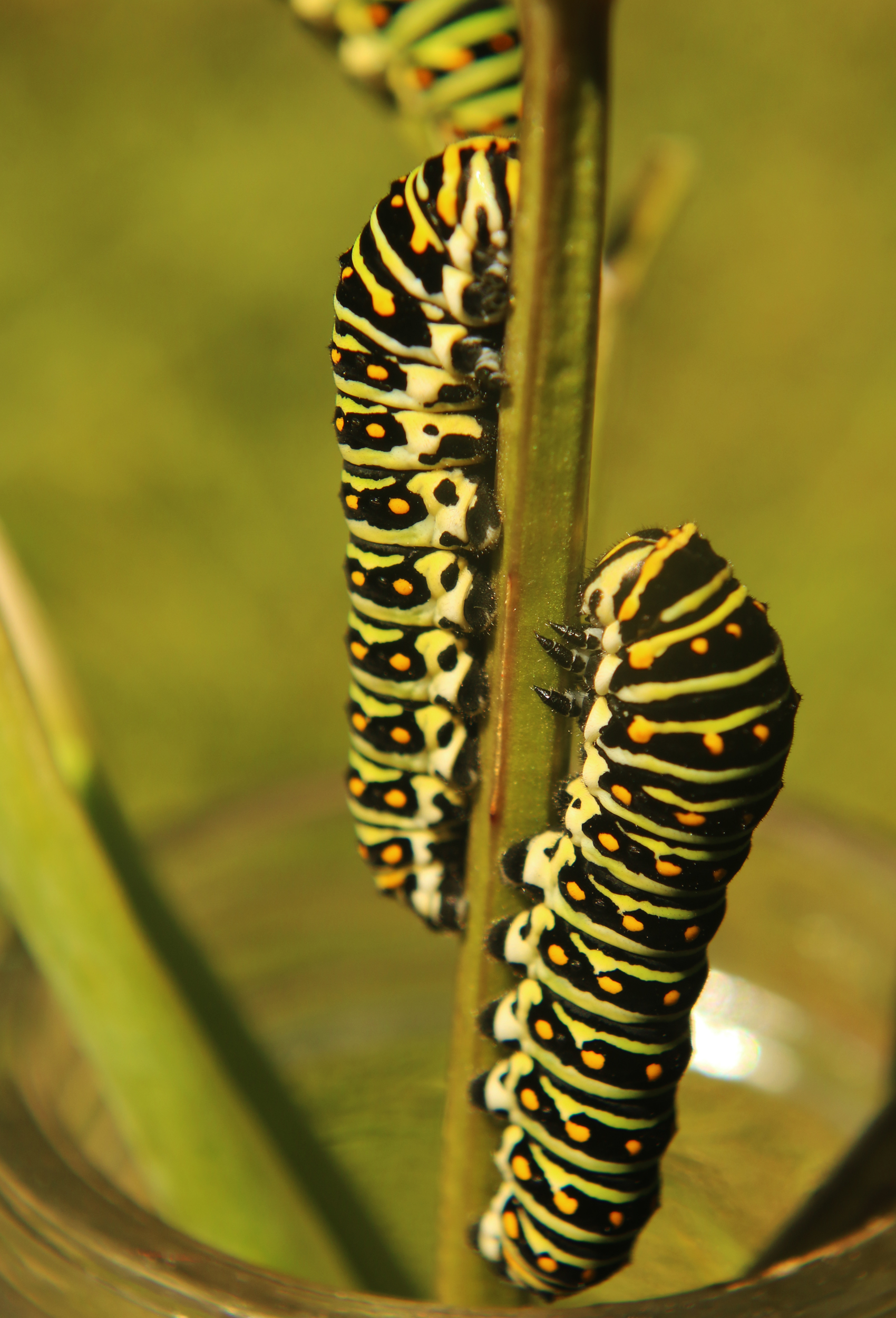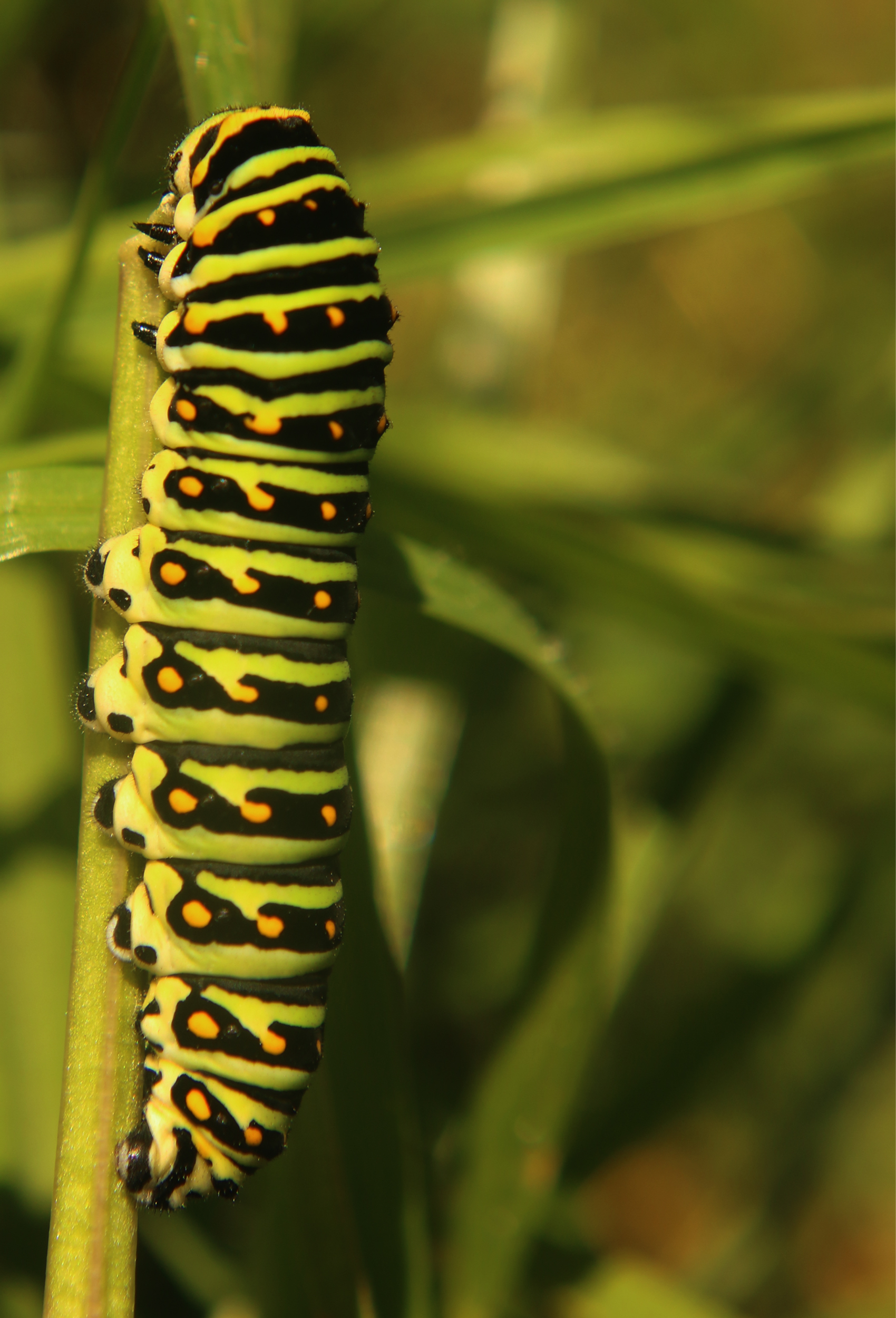Caterpillar Of
caterpillar | oruga
Caterpillars of most species are herbivorous, but not all; some (about 1%) are insectivorous, even cannibalistic. Some feed on other animal products; for example clothes moths feed on wool, and horn moths feed on the hooves and horns of dead ungulates.
Caterpillars as a rule are voracious feeders and many of them are among the most serious of agricultural pests. In fact many moth species are best known in their caterpillar stages because of the damage they cause to fruits and other agricultural produce, whereas the moths are obscure and do no direct harm. Conversely, various species of caterpillar are valued as sources of silk, as human or animal food, or for biological control of pest plants.
taxOnomy
kingdOm
animalia
phylUm
arthropoda
clasS
insecta
Order
leptidoptera
familY
papilionidae
genUs
papilio
Description
Caterpillars are insects, just like their parent butterflies or moths. They have six proper legs, like all insects, but also up to five pairs of stumpy prolegs with little hooks that help them to hang onto things, and to move in a wave-like motion.

They have adapted
to diverse habitats:
rain forests
and deserts


they have
two tooth-like mouth parts
called mandibles
that they use to bite and chew.
They work from side-to-side,
not up and down like our teeth.
What do caterpillars eat?
Mostly plants. Many species have a favourite plant, such as a type of tree or grass, or even stinging nettles. These are known as host plants. The butterfly or moth will lay its eggs on a host plant, so the caterpillars have a ready source of food when they hatch.
Caterpillar iS
larval stage Of
bUtterflies and mOths
Caterpillars are the larval stage Of
members of the order Lepidoptera
{ the insect order comprising butterflies and moths }.
It’s the second stage in its four-stage life cycle of egg, larva, pupa and adult.
As with most common names, the application of the word is arbitrary and the larvae of sawflies commonly are called caterpillars as well.
What happens
if yoU tOUch a caterpillar?
Most caterpillars are harmless, but some hairy caterpillars can cause a skin rash if touched. For your own safety, and that of the caterpillar, it’s best to admire them from a distance.
what abOUt cocoOns?
It’s usually moth caterpillars that make cocoons. They make liquid silk in their salivary {spit} glands and then drool it through an opening in their lip called a spinneret. It hardens into a thread when it comes into contact with the air and the caterpillar wraps it round itself to make the cocoon.
self-defense measures
spiny bristles
or long fine hair-like setae
More aggressive self-defense measures are taken by some caterpillars.
These measures include having spiny bristles or long fine hair-like setae with detachable tips that will irritate by lodging in the skin or mucous membranes. However some birds (such as cuckoos) will swallow even the hairiest of caterpillars. Other caterpillars acquire toxins from their host plants that render them unpalatable to most of their predators. For instance, ornate moth caterpillars utilize pyrrolizidine alkaloids that they obtain from their food plants to deter predators.
sOme prOtectiOn
Some caterpillars obtain protection by associating themselves with ants.
The Lycaenid butterflies are particularly well known for this.
They communicate with their ant protectors by vibrations as well as chemical means and typically provide food rewards.
Some caterpillars are gregarious; large aggregations are believed to help in reducing the levels of parasitization and predation. Clusters amplify the signal of aposematic coloration, and individuals may participate in group regurgitation or displays.
Caterpillars are the larval stage
Of members
of the order Lepidoptera
Caterpillars belong to the same classification as the butterfly that they become as butterflies. This scientific name comes from the Ancient Greek language. The first part of the scientific name lepís means scale while the second part of the scientific name pterón means wing.
There are about 180,000 species in this order that biologists have placed into 126 family and 46 superfamily classifications. Only about 10% of them may still be alive. Most butterflies are in the Papilionoidea superfamily, which can be divided into several classifications, including:


